Making waves: 80 years of Alvar Aalto's pioneering wood bending technique
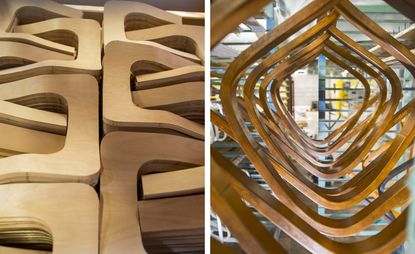
This year, Finnish design firm Artek turns 80, and the brand is celebrating in style, adding vibrant new upholstery colourways to its classic 'Domus' chair, and relocating to a spacious new flagship in Helsinki. Longstanding collaborators Iittala have got in on the anniversary action, adding a commemorative grey-scale edition to its time-honoured 'Alvar Aalto' vase collection. Artek even took time out of its busy birthday year to co-create some nifty nesting trays for Hotel Wallpaper*.
If that wasn't enough, Artek are set to launch a range of new finishes for the iconic 'L-leg' chairs – from leathers to lacquers and linoleum. As they riff on a classic, we look back on the chair's conception, in 1933, when Artek was but a fledgling idea in the mind of a group of Finnish idealists. It's our small way of raising a glass to 80 years of exemplary design.
The 'L-leg' came into being thanks to Alvar Aalto's adventures in wood bending techniques, which were a new phenomena in the 1930s. With the help of furniture manufacturer Otto Korhonen, Aalto developed a combination of cutting and steaming local Birch wood in order for it to become malleable.
Since then, the technique has remained pretty much the same: after being soaked in water, multiple vertical saw cuts are made in the end of a piece of wood a few millimeters apart – the deeper the cut, the bigger the bend. Then, thin strips of veneer are inserted into these slits and glued, increasing the stability of the finished component.
Aalto had an inkling he was on to a good thing with the 'L-leg' – early on he referred to it as 'the little sister of the architectural column'. Originally designed for 'Stool 60', it soon established itself as an anchor for the wider Artek collection. The beauty of the thing is its versatility – the 'L-leg' can be used as the basis for any number of seats, stools and tables. It has quite literally propped up hundreds of variations since it was patented in the 1930s. The technique has also spawned bending experiments in other materials, like steel, as we saw last year in Artek's 'Kaari' (or 'arch') collaboration with the Bouroullecs.
Aesthetically, these curves have become a defining feature of Artek's designs – flicking through a 2016 catalogue, the memory of Aalto's early bending experiments can be seen in every contemporary curve. But the 'L-leg' also represents Artek's ethos: fusing emerging technologies with art, in order to be true ambassadors and pioneers of Nordic design.

We take a trip down memory lane to understand more about Artek's traditional wood bending techniques. Pictured: inside the Artek factory
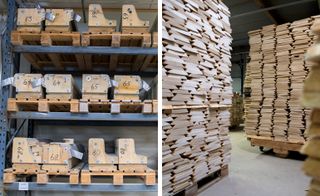
With the help of furniture manufacturer Otto Korhonen, Aalto developed a combination of cutting and steaming local Birch wood to make it malleable. Pictured: inside the Artek factory
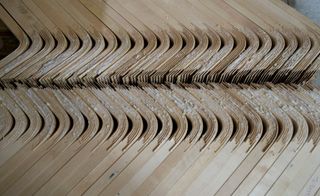
Aalto had an inkling he was on to a good thing with the 'L-leg' – early on he referred to it 'the little sister of the architectural column'. Pictured: inside the Artek factory
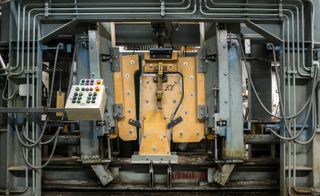
Originally designed for 'Stool 60', the 'L-leg' soon established itself as an anchor for the wider Artek collection. Pictured: inside the Artek factory
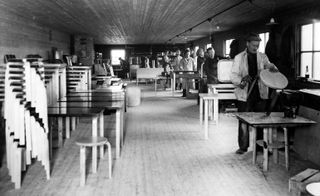
The beauty of the thing is its versatility – the 'L-leg' can be used as the basis for any number of seats, stools and tables

The 'L-leg' has quite literally propped up hundreds of variations since it was patented in the 1930s. Pictured: archive image, 1936

Aesthetically, curves have become a defining feature of Artek's designs – flicking through a 2016 catalogue, the memory of Aalto's early bending experiments can be seen in every contemporary curve. Pictured: archive image, 1936
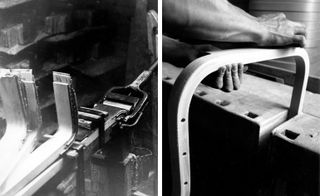
The 'L-leg' represents Artek's ethos of fusing emerging technologies with art, in order to be true ambassadors and pioneers of Nordic design. Pictured: archive image, 1936
INFORMATION
For more information, visit the Artek website
Photography courtesy Artek
Wallpaper* Newsletter
Receive our daily digest of inspiration, escapism and design stories from around the world direct to your inbox
Elly Parsons is the Digital Editor of Wallpaper*, where she oversees Wallpaper.com and its social platforms. She has been with the brand since 2015 in various roles, spending time as digital writer – specialising in art, technology and contemporary culture – and as deputy digital editor. She was shortlisted for a PPA Award in 2017, has written extensively for many publications, and has contributed to three books. She is a guest lecturer in digital journalism at Goldsmiths University, London, where she also holds a masters degree in creative writing. Now, her main areas of expertise include content strategy, audience engagement, and social media.
-
 Don’t Move, Improve 2024: London’s bold, bright and boutique home renovations
Don’t Move, Improve 2024: London’s bold, bright and boutique home renovationsDon’t Move, Improve 2024 reveals its shortlist, with 16 home designs competing for the top spot, to be announced in May
By Ellie Stathaki Published
-
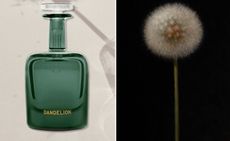 Perfumer H has bottled the scent of dandelions blowing in the wind
Perfumer H has bottled the scent of dandelions blowing in the windPerfumer H has debuted a new fragrance for spring, called Dandelion. Lyn Harris tells Wallpaper* about the process of its creation
By Hannah Tindle Published
-
 The best fashion moments at Milan Design Week 2024
The best fashion moments at Milan Design Week 2024Scarlett Conlon discovers the moments fashion met design at Salone del Mobile and Milan Design Week 2024, as Loewe, Hermès, Bottega Veneta, Prada and more staged intriguing presentations and launches across the city
By Scarlett Conlon Published
-
 Tour Yrjö Kukkapuro’s studio – a temple to the art of sitting down
Tour Yrjö Kukkapuro’s studio – a temple to the art of sitting downJoin us on a studio visit of Finnish interior architect and furniture designer Yrjö Kukkapuro
By Emma O'Kelly Last updated
-
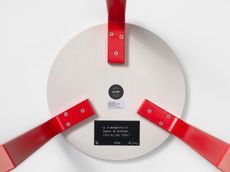 Artist Fischli/Weiss puts quizzical stamp on Alvar Aalto’s ‘Stool 60’
Artist Fischli/Weiss puts quizzical stamp on Alvar Aalto’s ‘Stool 60’Fischli/Weiss transforms the Alvar Aalto ‘Stool 60’ into a multifarious, whimsical sculpture full of burning questions, as part of the ICA x Artek Artist’s Editions series
By Harriet Lloyd-Smith Last updated
-
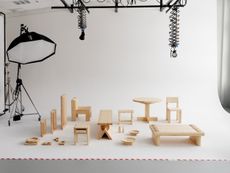 Finnish design gets redefined by new disruptor Vaarnii
Finnish design gets redefined by new disruptor VaarniiNewly launched design brand Vaarnii enlisted a group of international designers to create a collection of minimalist furniture in pine wood, available from Finnish Design Shop and Artek
By Rosa Bertoli Last updated
-
 Philippe Malouin designs sculptures that house your personal wares
Philippe Malouin designs sculptures that house your personal waresWorking with a team of master craftsmen, Philippe Malouin creates a range of curved home objects for Finnish brand Iittala, titled Kuru
By Alice Morby Last updated
-
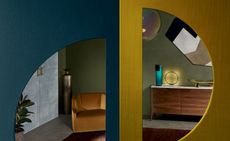 Bow belles: stay ahead of the curve with sensual velvets and geometric arcs
Bow belles: stay ahead of the curve with sensual velvets and geometric arcsBy Rosa Bertoli Last updated
-
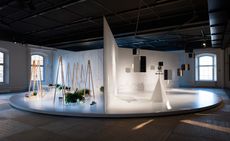 Artek and Daniel Rybakken reflect on the future at Stockholm Furniture Fair
Artek and Daniel Rybakken reflect on the future at Stockholm Furniture FairBy Sujata Burman Last updated
-
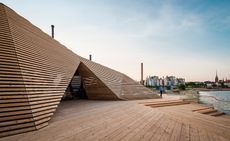 Helsinki Design Week 2016 reveals a Finland steeped in tradition, with an eye on its future
Helsinki Design Week 2016 reveals a Finland steeped in tradition, with an eye on its futureBy Jessica Klingelfuss Last updated
-
 A Finnish-French break: mobile bed and breakfast cottages set to open in Paris
A Finnish-French break: mobile bed and breakfast cottages set to open in ParisBy Emma Moore Last updated